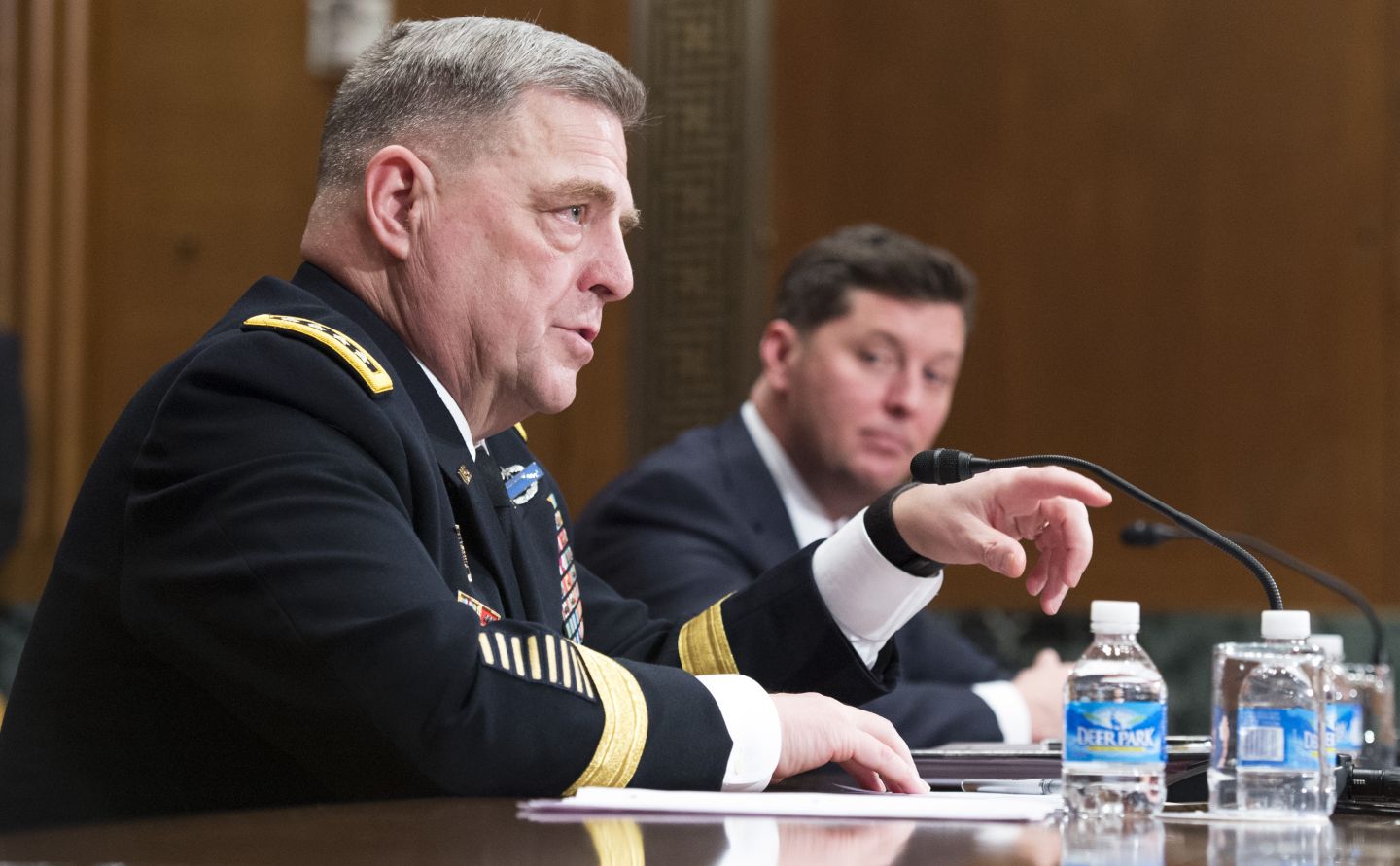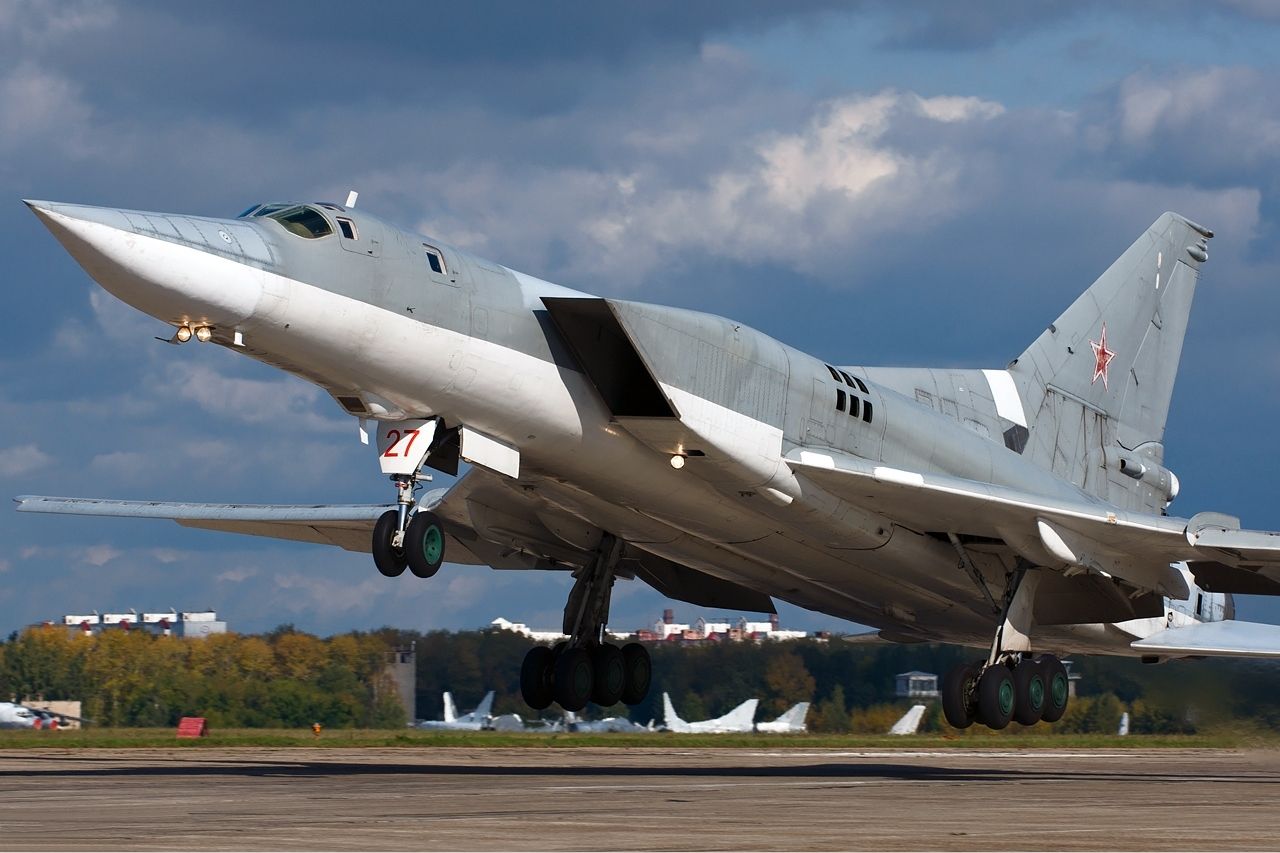The Army would like to see a few more Soldiers in the ranks, if it were authorized by Congress — but only if those additional Soldiers are funded to keep them war-ready, said Chief of Staff of the Army Gen. Mark A. Milley.
The Army has been directed to reduce its total end strength, across all three components, to just 980,000, a number deemed just “minimally sufficient” earlier this month by retired Army Gen. Carter Ham. Ham served as chairman of the National Commission on the Future of the Army (NCFA). Late last month, the commission released a report to Congress containing 63 recommendations about how to prepare the Army for the future.
On Capitol Hill, Feb. 24, lawmakers with the Senate Appropriations Committee asked Milley if he thought increased Soldiers in the ranks would help him keep the Army more ready for future fights. In particular, one lawmaker asked, how would an additional 55,000 Soldiers help the Army increase its readiness in an increasingly uncertain world?
Readiness, Milley has said repeatedly since taking his position in August of last year, is his No. 1 priority.
“I think that having increased numbers would help out readiness, if and only if we had the money to support that,” he said. “That’s fundamental. The reason this budget has us on a glide path to 450,000 in the Regular Army, 335,000 in the National Guard and 196,000 in the Army Reserve — that’s the size force balanced with modernization and readiness that we can afford, given that top line.”
Milley said an increase in end strength could be helpful, but it has to come with funding that will support the preparedness of those troops for combat. Numbers aren’t enough, he said.
“I want to caution — numbers are not the only thing,” he said. “Quality matters. When I talk readiness, I’m talking about units that are full-up on strength, are highly trained in combined arms operations, and are capable of sustaining and executing counter-insurgency operations.
“The size of a given force is important — quantity has a quality all its own,” he said. “But that is one of many factors to determine capabilities in the outcomes in ground combat. I certainly would welcome additional end strength, only if it came with the money attached to it.”
Both Milley and Acting Secretary of the Army Patrick J. Murphy testified on Capitol Hill in front of the SAC to defend the Army’s portion of the president’s budget, which was released to Congress earlier this month.
Murphy was actually sworn in as under secretary of the Army just hours after his appearance on the Hill.
An Army veteran himself, Murphy, like Milley, brought nearly everything he said to lawmakers back to force readiness.
“With our $125.1 billion base request, our Army will focus its efforts on rebuilding readiness for large-scale, high-end ground combat today,” Murphy said. “We do so because we believe that ignoring readiness shortfalls puts our nation at great risk.”
Readiness doesn’t just allow the Army to win wars, Murphy said. Knowing that the U.S. Army is ready also deters potential adversaries from engaging. Readiness prevents conflict. With several potential adversaries around the globe, Murphy said, it’s critical the Army gain that readiness edge.
“We are reminded with alarming frequency that great power conflicts are not dead,” he said. “Today they manifest on a regional basis. Both Russia and China are challenging America’s willingness and ability to enforce international standards of conduct. A ready Army provides America the strength to deter such actions.”
Milley has recently laid out what he considers to be five primary threats to the United States. Included among those threats are China, which is now looking to increase its influence globally, especially in the Pacific; North Korea; Iran; and the continued threat of terrorist groups around the globe, particularly in the Middle East and Africa. But the biggest threat, Milley says, is an increasingly aggressive Russia.
“In my view, Russia is the No. 1 threat to the United States,” he said. “They are the only country on Earth that has the capability to be an existential threat to the United States. In addition to having the capability, they have also demonstrated aggressive intent, at least since 2008, by invading countries and using national power in ways that are not favorable to U.S. interests.”
A conflict with Russia, both Murphy and Milley maintain, would be nothing like the counter-insurgency operations American Soldiers had been honing their skills on for the 15 years following the 2001 fight with the Taliban in Afghanistan and the subsequent invasion of Iraq.
Russia is a near-peer competitor, they say. And “readiness” for U.S. forces means the preparedness to go up against a near-peer, force-on-force competitor with weapons nearly as good as those the Army has, and the funding to resource such a fight.
Right now, Milley said, there is a gap in U.S. capability.
The Army has been involved in counter insurgency intelligence (COIN) for 15 years, he said. That combined with reduced and unpredictable budgets “has created a gap in our proficiency to conduct combined arms operations against enemy conventional hybrid forces, resulting in an Army today that is less than ready to fight against emerging threats.”
Getting that capability up to snuff is something the Army is going to need to work on. For instance, this year’s Army budget request includes funding for 19 Combat Training Center rotations — something Murphy says will help the Army get back the edge it needs.
“Our future command sergeants major and brigade commanders have not had critical Combat Training Center experiences as junior leaders, [or] trained for high-end ground combat,” he said. “Investing for readiness today builds a foundation on which future training can be retained longer throughout our Army…Our Army must be prepared to face the high-end and advanced combat power of Russia, or more likely, Russian capability employed by surrogate actors.”
What will a future fight bring with a near-peer competitor? Milley said it’ll involve both kinetic and cyber effects.
“Hybrid, higher-end threats, we will face, no doubt,” he said. “We are going to face a very significant cyber threat, and a very lethal environment with the proliferation of precision-guided munitions, unmanned aerial vehicles, intense densities of artillery and so on.”
That battlefield, he said, will be very different than what the U.S. has experienced in Iraq and Afghanistan.
“We are preparing for that,” he said. “This whole budget is all about that. It’s about increasing readiness to be able to fight in that environment. That’s the one we are concerned about. We need to be able to do that in a combined arms way. This won’t be just light infantry and doing counter-insurgency patrols. This will require high-end, combined arms and require a joint force.”
The Army won’t do it alone, he said. Readiness also means the ability to fight alongside sister services, integrating Army capabilities with what they bring to the table.
“We have to be fully integrated with air and the naval capabilities — stand-off weapons systems,” he said. “And we have to train to it.”
When Milley says readiness is his No. 1 priority, he means that the Army must get ready to fight a war that is unlike what most in uniform now have seen for most of their military career.
“We have to think not only about the weapons systems and the size of forces, but the ways we operate in that environment,” he said. “It’ll be a fundamentally different way of operating in that environment than we have seen in the last 15 years.”
MORE HOURS IN THE COCKPIT
Right now, Army aviators are getting about 11 hours in the cockpit each month for training.
Both Murphy and Milley agree that it’s just not enough to keep them combat ready and to ensure they are the best in the world
The NCFA report, Murphy pointed out, recommended two additional flight hours a month for pilots across the force. But he also pointed out that increase would come with a cost. The report estimates the increase would be about $250-300 million a year.
Murphy said there is now a commission inside the Army, made up of representatives from all three components, to look through the NCFA report, at the 63 recommendations, and to determine how to move ahead with them. Increases to the flying hours is among recommendations on the table for review, he said.
“It is critically important to make sure that our aviators are the best aviators on the battlefield,” Murphy said.
Milley said Army aviators used to get about 14-15 hours a month in the cockpit for training, but now it’s down to about 11.
“We need to crank that back up,” he told lawmakers. “We do accept some risk there. We don’t want to accept risk. We do need some help there.”











